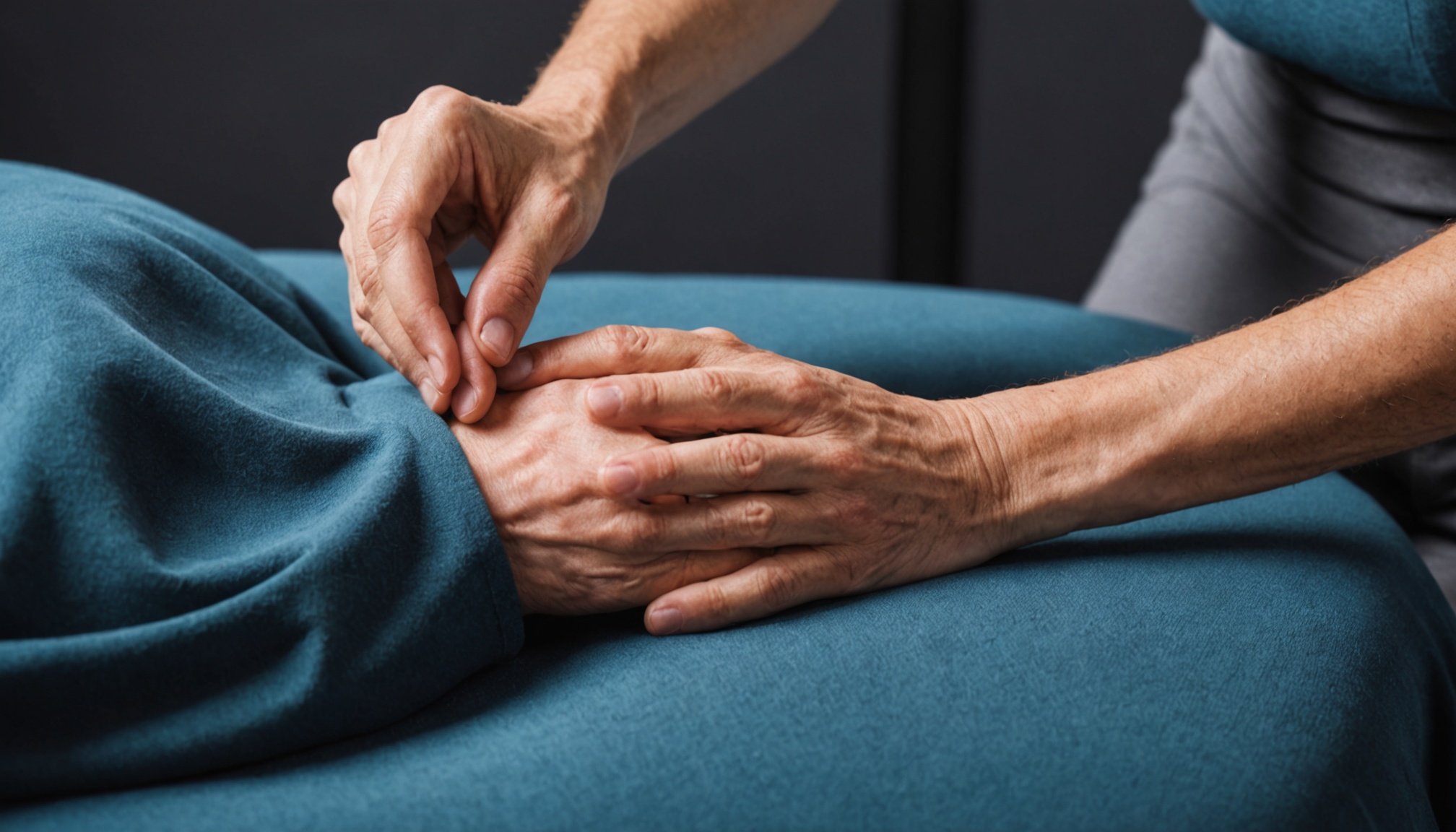Understanding Acupressure
Acupressure is an ancient wellness practice rooted in Traditional Chinese Medicine (TCM), tracing back more than 2,500 years. This method involves applying pressure to specific points on the body to promote healing and wellness. As a non-invasive therapy, acupressure serves as a tool for stress relief and anxiety management, making it quite relevant in today’s fast-paced world.
Physiologically, acupressure is believed to stimulate the body’s energy flow, known as Qi or Chi, through pathways called meridians. When pressure is applied to these points, it can help to unblock or rebalance the flow of energy, addressing bodily discomforts and emotional stress. This practice can increase circulation, enhance lymphatic drainage, and release muscle tension, contributing to overall well-being.
Also read : Embarking on a sustainable weight loss adventure: the essential guide to achieving lasting success
In contemporary wellness, acupressure has gained recognition for its potential to soothe daily stressors and support emotional health. It’s now integrated into various health practices, including massage therapy and chiropractic care. Many individuals seek acupressure for its holistic benefits, experiencing relief from tension and anxiety without the need for medication. This positions acupressure as a valuable approach to maintaining mental clarity and emotional resilience.
Benefits of Acupressure for Anxiety and Stress
Acupressure offers significant mental health benefits, notably in anxiety reduction and stress management. Numerous scientific studies attest to its efficacy. One such study highlights the reduction in cortisol levels, which are stress hormones, following regular acupressure sessions. Acupressure stimulates the body’s pressure points, which may enhance mood and alleviate stress symptoms.
Topic to read : Discover the art of progressive muscle relaxation: the complete blueprint to conquer insomnia
Practicing acupressure can yield both emotional and physical benefits. Emotionally, it can promote calm and mental clarity. Physically, it may improve sleep, reduce muscle tension, and foster overall relaxation. For those dealing with chronic stress or anxiety, integrating acupressure into their wellness routine can be a beneficial complement to traditional therapies.
Personal testimonials often recount experiences of significant stress relief through acupressure. Individuals have reported a marked decrease in anxiety episodes and an increased sense of well-being. These anecdotes, coupled with empirical evidence, underscore acupressure’s potential as a holistic approach to managing stress and anxiety naturally.
Incorporating regular acupressure into one’s lifestyle can serve as a valuable tool for maintaining both mental clarity and emotional balance, offering a non-invasive means to enhance overall well-being.
Essential Acupressure Techniques
Exploring key acupressure techniques can empower individuals to effectively manage stress and anxiety. Let’s delve into three core methods:
Technique 1: The Heart 7 Point
The Heart 7 Point, located on the inner wrist crease in line with the little finger, is pivotal for anxiety relief. Begin by applying gentle pressure with your thumb for about one to two minutes. This technique aids in promoting emotional calmness and mental clarity by stimulating heart energy.
Technique 2: The Pericardium 6 Point
The Pericardium 6 Point is situated three finger widths below the wrist between the two tendons. Use your thumb to apply firm yet gentle pressure for up to three minutes. This point is known for alleviating nausea and reducing anxiety, further enhancing one’s emotional stability.
Technique 3: The Ankle 6 Point
Located on the inner side of the leg just above the ankle bone, the Ankle 6 Point can be activated using your index finger. Maintain pressure for approximately three minutes. This technique contributes to emotional balance, and it can also aid digestion, offering a holistic approach to wellness.
Utilizing these methods with consistency can substantially enhance well-being, supporting a proactive approach to stress management.
Creating a Personal Acupressure Routine
Developing an acupressure routine tailored to your lifestyle enhances both stress management and overall wellness. By consciously integrating acupressure into your daily life, you can target specific anxiety triggers with precision.
First, consider the common stress points in your day-to-day life. Is it the morning rush, or perhaps the evening unwind? Identifying these triggers will help you customize a routine that addresses specific needs.
Here’s a simple approach to begin incorporating acupressure into your routine:
- Morning Ritual: Start with the Heart 7 Point to set a calm and balanced tone for your day.
- Midday Recharge: Utilize the Pericardium 6 Point during a lunch break for a refreshing boost in emotional stability.
- Evening Wind Down: Finish with the Ankle 6 Point before bed to promote relaxation and improve sleep quality.
Consistency is key. Set aside 5-10 minutes per session, aiming for at least three to four times per week. Adjust your frequency based on personal stress levels. Making acupressure a part of your regular wellness routine contributes substantially to emotional resilience and stress management.
Acupressure Tools and Resources
Incorporating the right acupressure tools can significantly enhance your practice, offering both precision and convenience. Acupressure mats and pillows are popular aids, designed to stimulate multiple pressure points simultaneously, making them ideal for stress relief. These tools mimic the effect of manual pressure, providing a hands-free way to relax and soothe tension.
Massage balls and rollers are excellent for targeting specific areas that require deeper pressure, especially useful for those with muscle tension or frequent anxiety symptoms. They are handy for self-care, allowing users to apply controlled force where it is needed most.
To deepen your understanding, consider consulting recommended books such as “Acupressure’s Potent Points” by Michael Reed Gach, which offers comprehensive guides on techniques and benefits. Online courses provide interactive platforms to learn and refine your techniques.
Community resources and support groups can also serve as valuable additions, offering insights and shared experiences. Engaging with others who practice acupressure allows for the exchange of tips and can enhance motivation.
Integrating these resources will not only bolster your self-care routine but also cultivate a more effective and informed approach to anxiety management.
Conclusion and Next Steps
Fostering an ongoing practice of acupressure can lead to significant improvements in managing anxiety and stress. For those eager to delve deeper into this practice, consider beginning a journey of self-discovery. Explore various techniques consistently to understand what resonates best with your body’s needs.
To dive into the world of acupressure, engage with community workshops or online courses. These platforms not only enhance technique but also provide access to a network of fellow practitioners. This collective experience can be instrumental in maintaining motivation and effectiveness.
Suggested next steps include setting achievable goals. Start small, with specific stress points or anxiety triggers as your primary focus. Observing and adapting these practices to suit your lifestyle can strengthen your understanding of holistic well-being.
Consider documenting your journey. Keeping a journal of your experiences can provide valuable insights into how different techniques impact your emotional and physical state, guiding your self-care routine over time.
Remember, consistent self-care is paramount. By prioritizing acupressure within your wellness routine, you’re empowering yourself with a tool that promotes both mental clarity and emotional resilience. This dedication can pave the path to a balanced and centred life.


